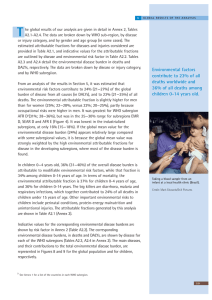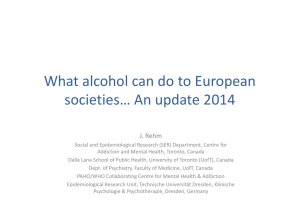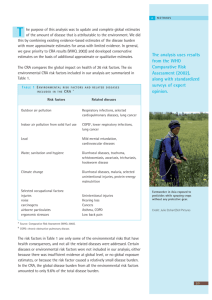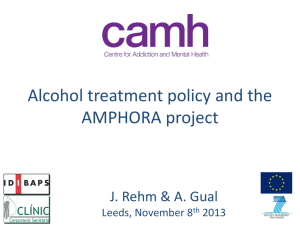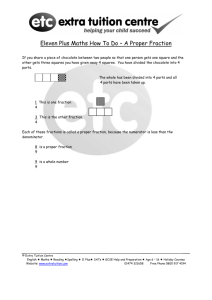The `attributable fraction` is the decline in disease or injury that could
advertisement
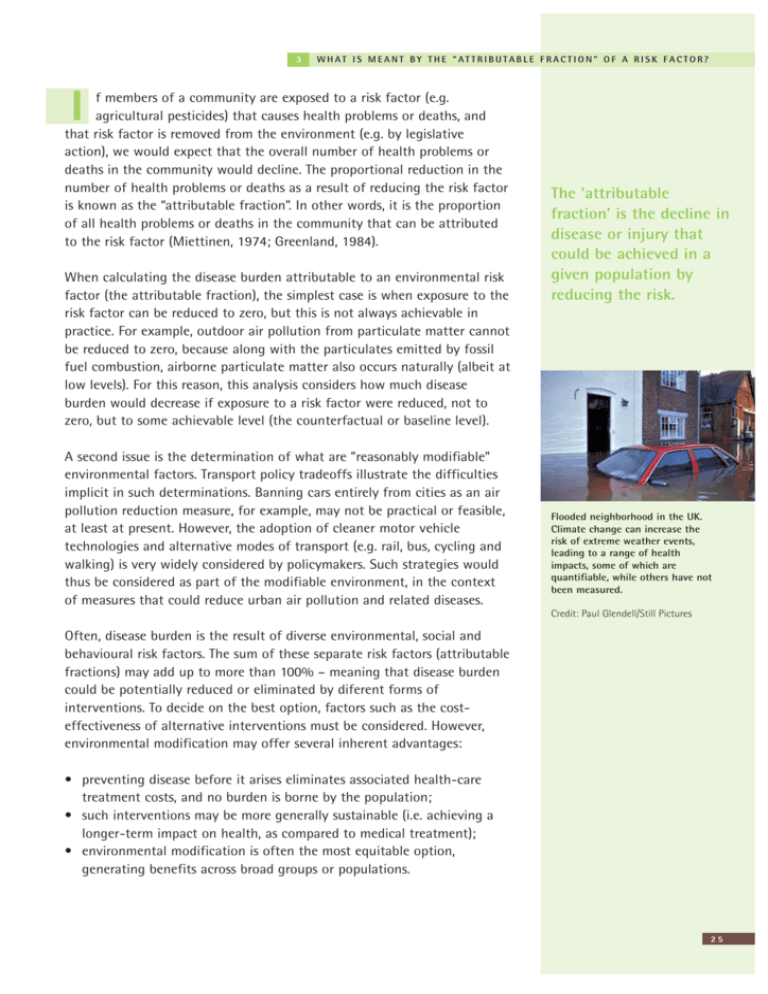
3 WHAT IS MEANT BY THE "ATTRIBUTABLE FRACTION" OF A RISK FACTOR? I f members of a community are exposed to a risk factor (e.g. agricultural pesticides) that causes health problems or deaths, and that risk factor is removed from the environment (e.g. by legislative action), we would expect that the overall number of health problems or deaths in the community would decline. The proportional reduction in the number of health problems or deaths as a result of reducing the risk factor is known as the “attributable fraction”. In other words, it is the proportion of all health problems or deaths in the community that can be attributed to the risk factor (Miettinen, 1974; Greenland, 1984). When calculating the disease burden attributable to an environmental risk factor (the attributable fraction), the simplest case is when exposure to the risk factor can be reduced to zero, but this is not always achievable in practice. For example, outdoor air pollution from particulate matter cannot be reduced to zero, because along with the particulates emitted by fossil fuel combustion, airborne particulate matter also occurs naturally (albeit at low levels). For this reason, this analysis considers how much disease burden would decrease if exposure to a risk factor were reduced, not to zero, but to some achievable level (the counterfactual or baseline level). A second issue is the determination of what are ”reasonably modifiable” environmental factors. Transport policy tradeoffs illustrate the difficulties implicit in such determinations. Banning cars entirely from cities as an air pollution reduction measure, for example, may not be practical or feasible, at least at present. However, the adoption of cleaner motor vehicle technologies and alternative modes of transport (e.g. rail, bus, cycling and walking) is very widely considered by policymakers. Such strategies would thus be considered as part of the modifiable environment, in the context of measures that could reduce urban air pollution and related diseases. The ’attributable fraction’ is the decline in disease or injury that could be achieved in a given population by reducing the risk. Flooded neighborhood in the UK. Climate change can increase the risk of extreme weather events, leading to a range of health impacts, some of which are quantifiable, while others have not been measured. Credit: Paul Glendell/Still Pictures Often, disease burden is the result of diverse environmental, social and behavioural risk factors. The sum of these separate risk factors (attributable fractions) may add up to more than 100% – meaning that disease burden could be potentially reduced or eliminated by diferent forms of interventions. To decide on the best option, factors such as the costeffectiveness of alternative interventions must be considered. However, environmental modification may offer several inherent advantages: • preventing disease before it arises eliminates associated health-care treatment costs, and no burden is borne by the population; • such interventions may be more generally sustainable (i.e. achieving a longer-term impact on health, as compared to medical treatment); • environmental modification is often the most equitable option, generating benefits across broad groups or populations. 25
